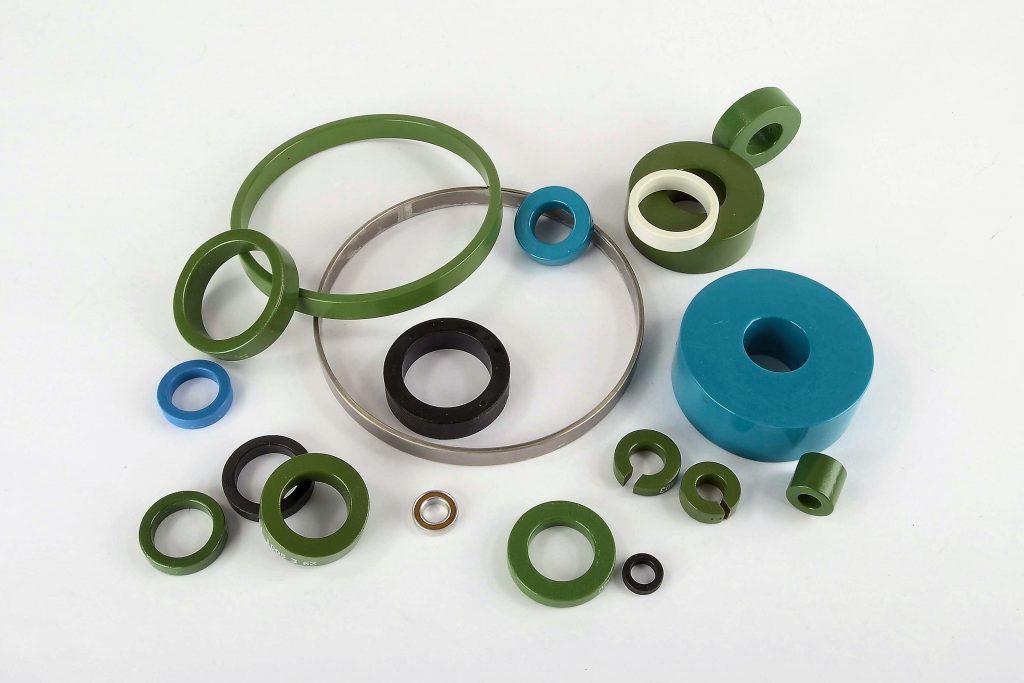The tape wound toroidal core approaches the perfect magnetic circuit configuration as well as permitting the most efficient application of high permeability magnetic alloys. The physical and magnetic characteristics of the toroidal shape reveal many features which contribute to this near-perfect circuit. For instance, the air gap in the magnetic path is so small that it can be considered non-existent. This minimizes losses, fringing, leakage, distortion, and decreases the magnetising force necessary to produce a given flux within the material.

The tape wound core configuration also provides a good degree of self-shielding from external magnetic fields. The single, uniform, magnetic path causes any entering magnetic field to split into two and induce equal but opposite voltages in the two halves of a uniformly distributed winding. Thus, there tends to be no voltage apparently induced in the total winding.
Core Construction
Tape wound toroidal cores are fabricated on specially designed machines which wind insulated tape onto a mandrel under controlled tension to provide an extremely uniform cross-section. The wound cores are then annealed in a controlled atmosphere of hydrogen/nitrogen. This develops the specific magnetic characteristics required for the application.
Annealed cores are sensitive to mechanical stresses in varying degrees depending upon the alloy. These stresses cause changes in the magnetic characteristics of the material which may severely alter the performance of the finished core. To prevent these changes from taking place, the annealed tape cores are housed within cases which protect them from the strains of electrical winding and other external disturbances.
These cases are fabricated of various materials depending upon the intended application: plastics; phenolic; nylon; glass-reinforced nylon; and aluminum are typically used.
A damping medium fills the space between the core and the case to minimize the motion of the core within the case, thus reducing the possibility of change in electrical characteristics under shock and vibration.
Available Materials:
- Amorphous alloys
- Nanocrystalline alloys
- Cobalt iron
- MicrosilTM; (grain oriented silicon steel)
- Square 50 (nickel-iron)
- SupermalloyTM (80% nickel-iron)
- SuperPermTM 80 (80% nickel-iron)

